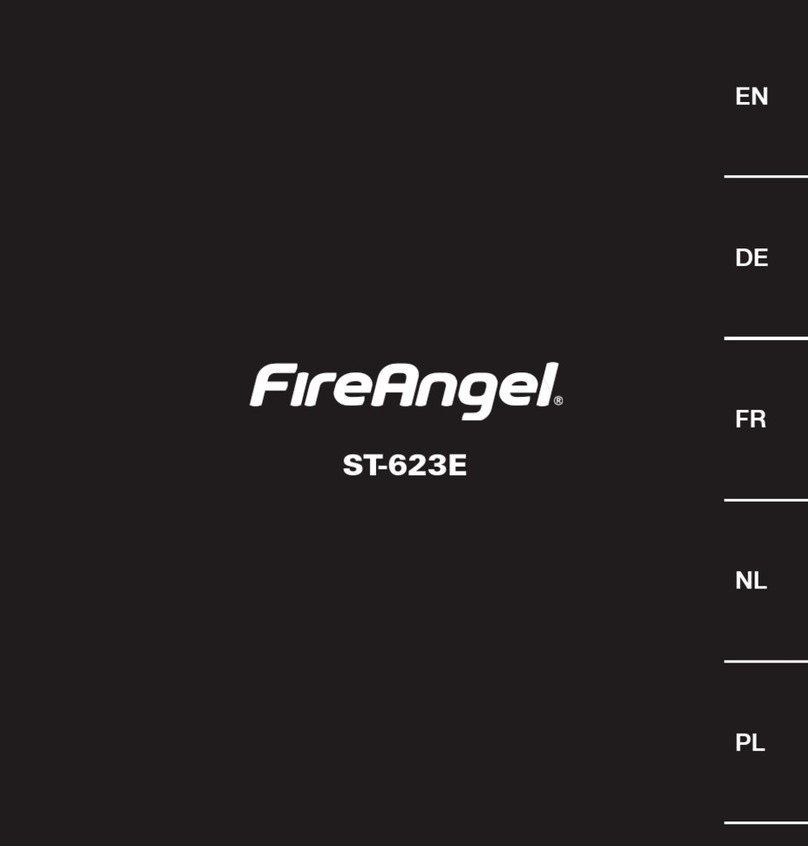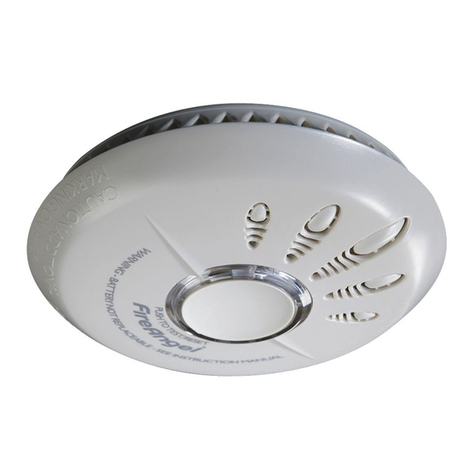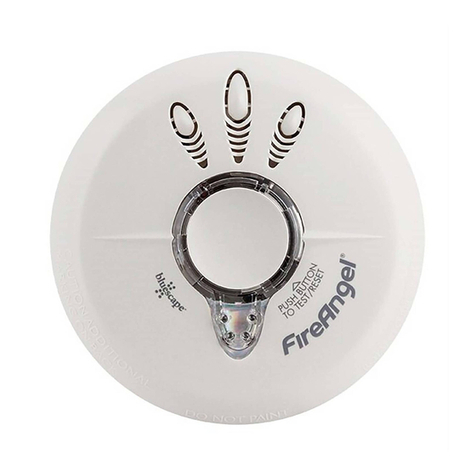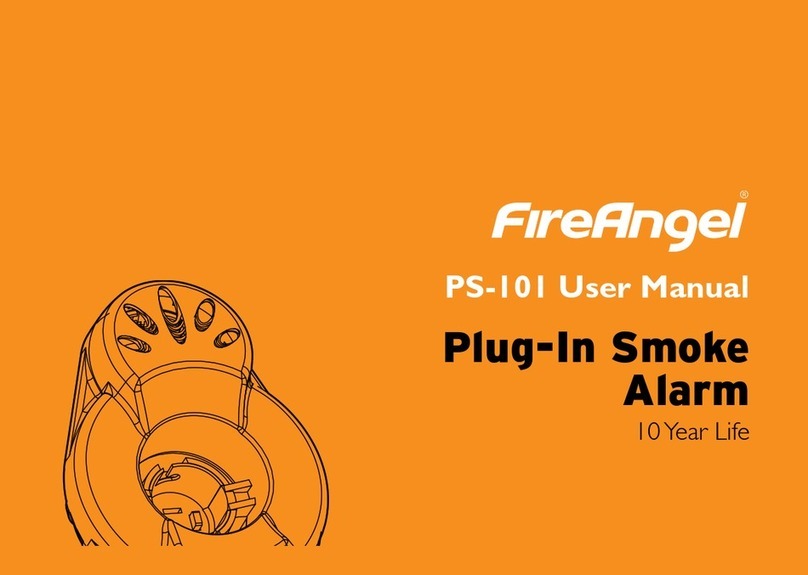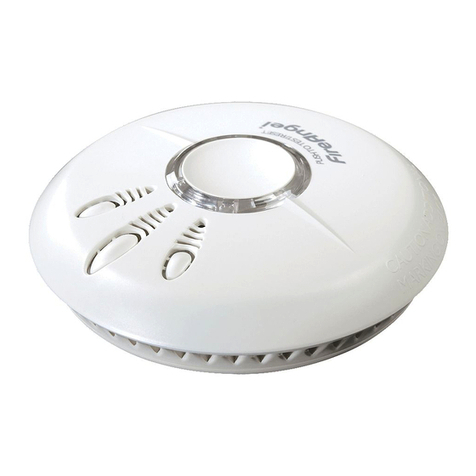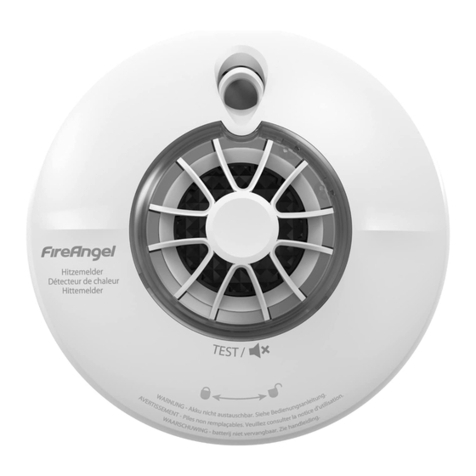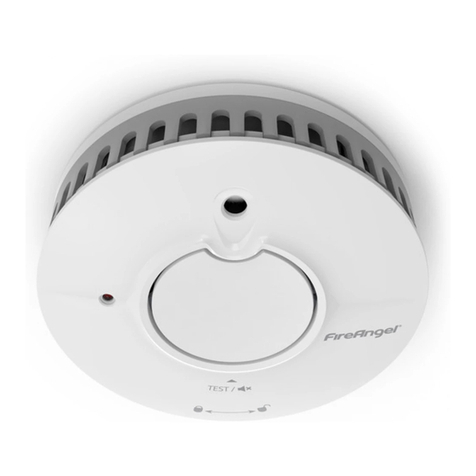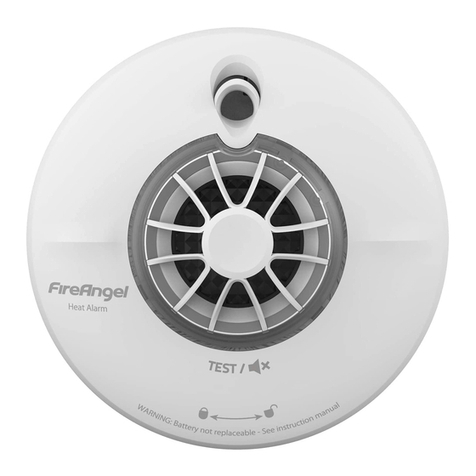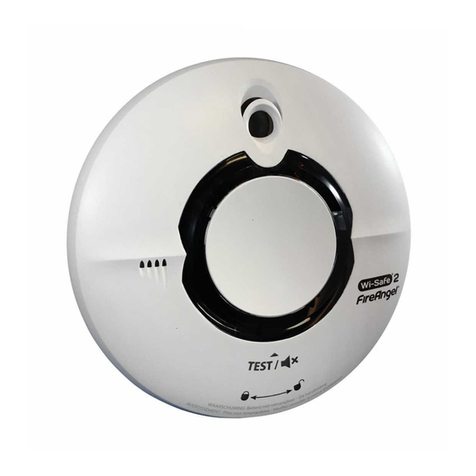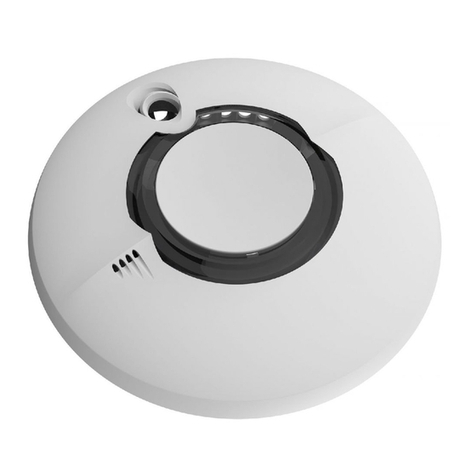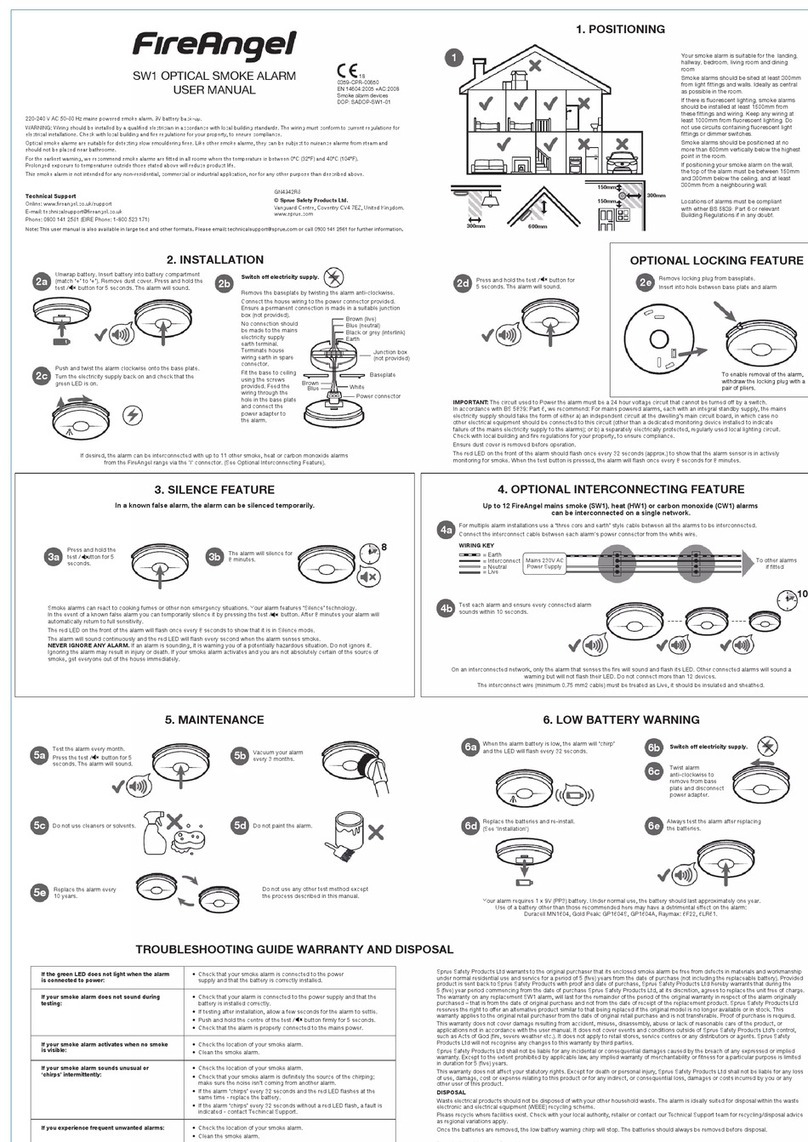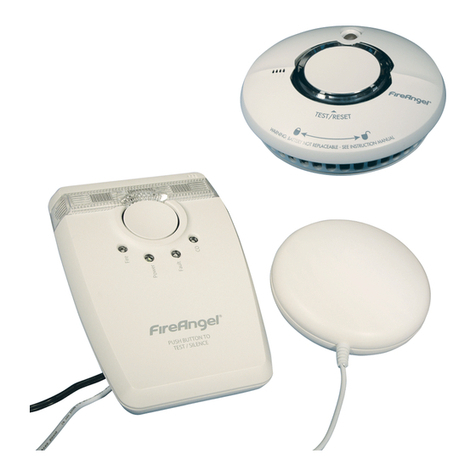10 year life smoke alarm is
byaninternallithiumpowerpack.
unnecessary use of the power
to installation, and to ease
the alarm reaches the end of its
alarm is supplied with the power
deactivated state. The power
alarm is automatically enabled
alarm is fully locked on to the
plate.
IMPORTANT: Your alarm
work until it is correctly
mountingplate.
SENSOR TECHNOLOGY
Traditionally 3 types of sensor technology
havebeenusedindomesticsmokealarms.
Optical smoke alarms are typically more
eectiveatdetectingslowburningres.
Ionisationsmoke alarmsare generallymore
eectiveatdetectingfast,amingres.
Heat alarms are triggered when room
temperature reaches a set point (typically
56°C) these alarms are generally used in
kitchens.
THERMOPTEK SENSOR TECHNOLOGY
This combines an optical sensing chamber
with thermal enhancement. The alarm is
eective at detecting slow burning res,
and constant monitoring of temperature
changesenablesthesensitivityofthealarm
tobeinstantlyincreasedtherebyquickening
thetypicalresponsetimetofastamingres
signicantly.
Thermoptek alarms are “toast-proof”
meaning they can be positioned in area
close to kitchens that may be aected by
cookingfumes.Heatalarmsshouldbeused
inkitchenswhererequired.
APPLICATION
WARNING: Your FireAngel smoke
alarm can be installed into a new
build property as additional protection
to an existing smoke detection system
only. It cannot be used as a substitute for
a hard wired system as required in new
build properties. In this type of property
the building regulations require alarms
to be interlinked. You can obtain further
information from your local re service or
building control department at your local
council oces. These sources generally
provide advice on new builds or projects
thatrequireplanningpermission.
Your smoke alarm typically meets the
minimum requirements for family living
unitsinexistingbuildings,aslongasatleast
one unit is installed on each oor/level of
yourproperty.
Inordertoachievetheearliestrewarning,
we recommend that a smoke alarm is
tted in all rooms where the temperature
is normally between 4°C (40°F) and 38°C
(100°F). Check the section on ‘Positioning’
to ensure that the smoke alarm is to be
correctly positioned for the particular
dwelling into which it is intended to be
installed.
WARNING:The alarmpositionsshown
below are based on typical homes.
Construction and layout of individual
dwellings will vary, so this should be


